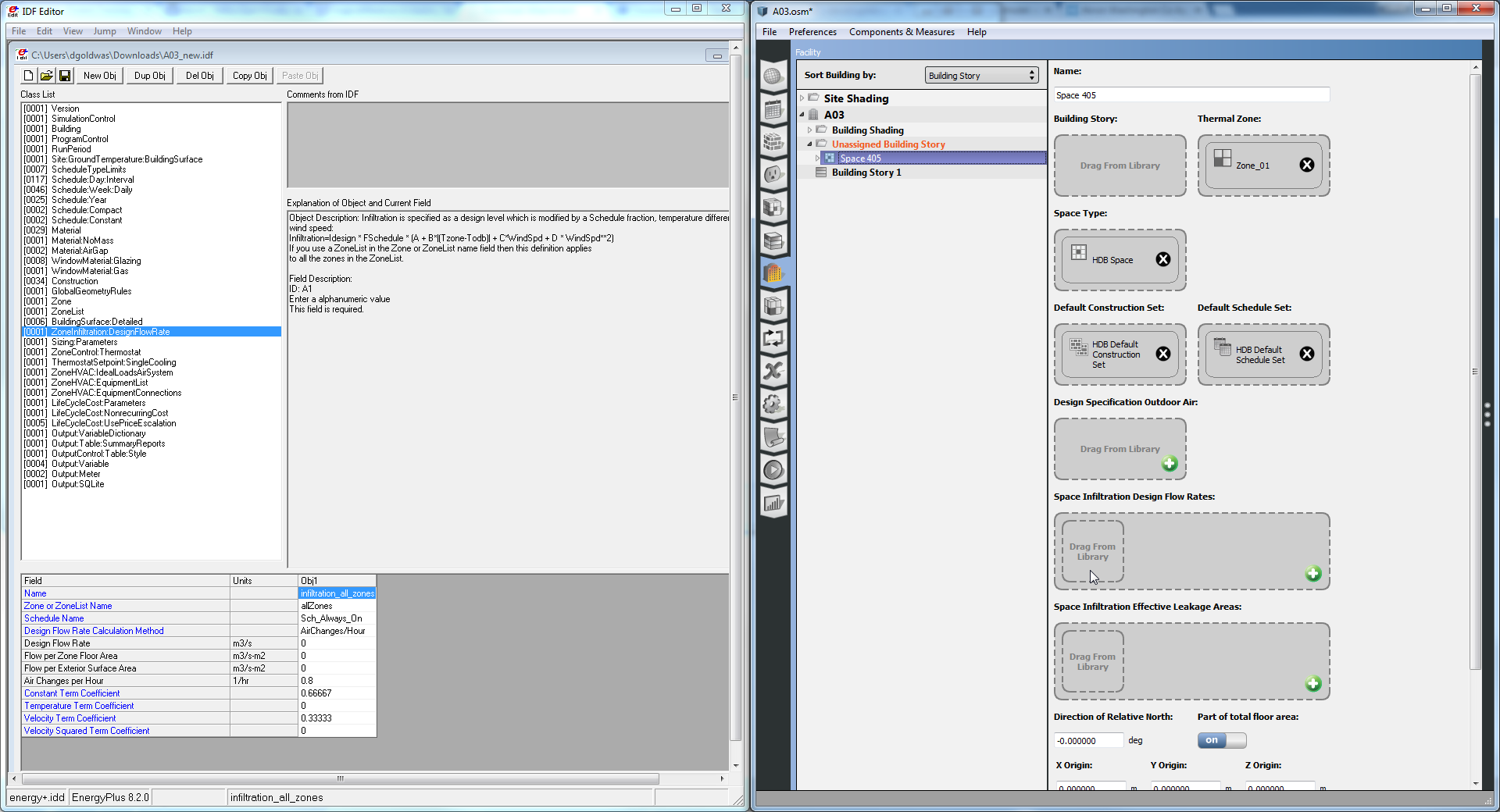Huge difference in cooling loads between Openstudio and EnergyPlus
I have a simple one zone model (W=5, L=5, H=3) with some typical materials and construction, no window, no internal gains.
I simulated the annul cooling loads for this model in two methods, however, the results are hugely different.
Method 1: the model is created using Openstudio plugin for sketchup, and then exported as IDF file. The exported IDF file was added with an ideal loads air system, equipment list and equipment connection for the only zone, and a single cooling thermostat with a setpoint temperature of 24C specified for the ideal loads air system which is scheduled to be active 24/7 throughout the whole year.
Method 2: the model is created using Openstudio plugin for sketchup and further edited in Openstudio stand alone application, through which a dual setpoint thermostat is added with the cooling setpoint of 24c and heating setpoint 20c. This is because only dual setpoint thermostat is available in Openstudio, although only cooling setpoint will be used because I'm using Singapore's weather file which is in tropical region. The ideal air system is turned on for the only zone.
The annual cooling loads for method 1 is 9579.21kWh, whereas the result for method 2 is 21.29GJ which is about 5912kWh.
I'd like why there is such a huge difference between the two methods, both aim at modeling the annual cooling loads for a simple zone with an ideal loads air system to maintain 24°C throughout the whole year.
The IDF file and the OSM model are shared in the following link:
Hope I explained my problem clearly, and hope you can kindly advise! Thank you very much!





